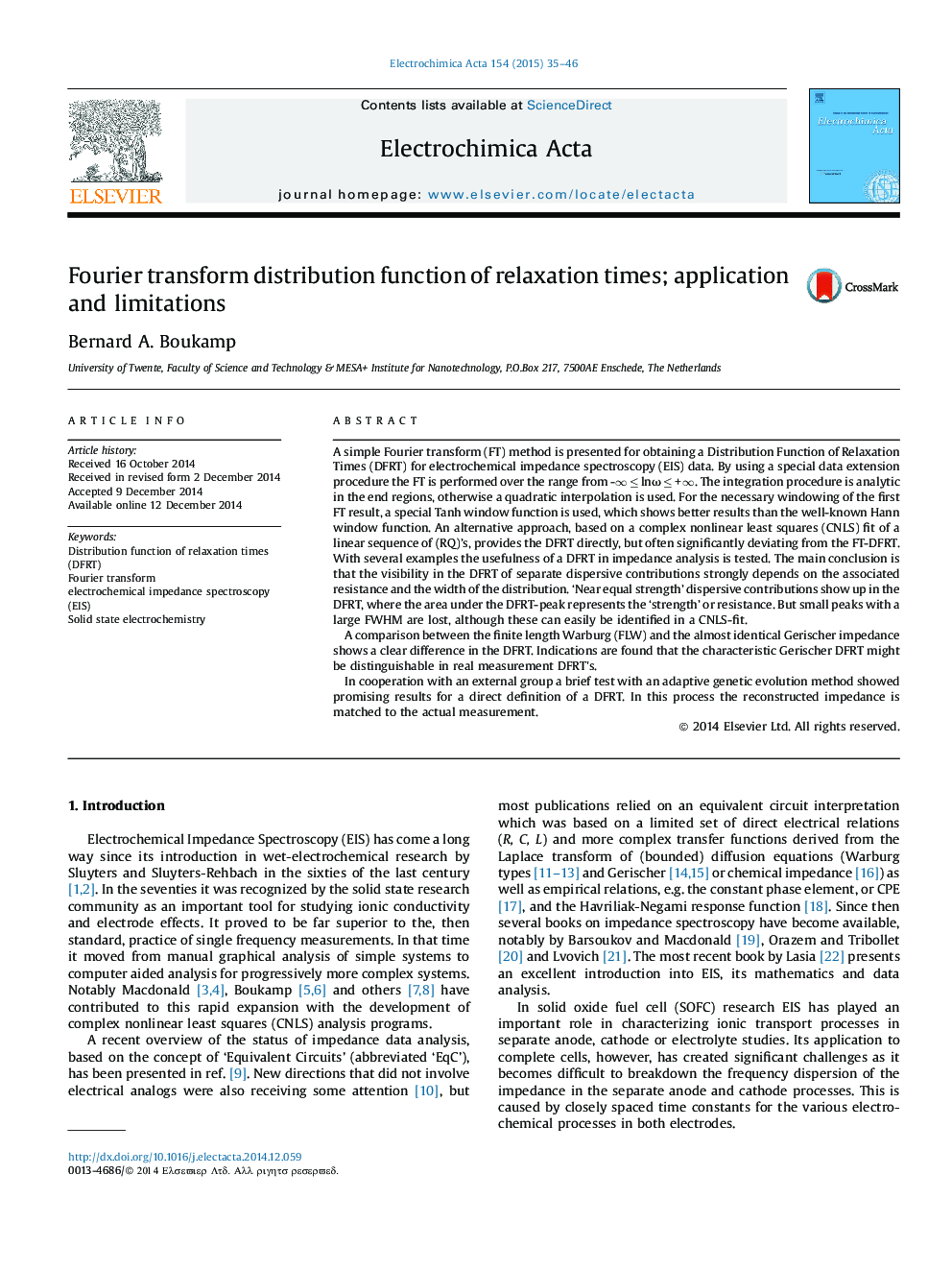| Article ID | Journal | Published Year | Pages | File Type |
|---|---|---|---|---|
| 184662 | Electrochimica Acta | 2015 | 12 Pages |
A simple Fourier transform (FT) method is presented for obtaining a Distribution Function of Relaxation Times (DFRT) for electrochemical impedance spectroscopy (EIS) data. By using a special data extension procedure the FT is performed over the range from -∞ ≤ lnω ≤ + ∞. The integration procedure is analytic in the end regions, otherwise a quadratic interpolation is used. For the necessary windowing of the first FT result, a special Tanh window function is used, which shows better results than the well-known Hann window function. An alternative approach, based on a complex nonlinear least squares (CNLS) fit of a linear sequence of (RQ)’s, provides the DFRT directly, but often significantly deviating from the FT-DFRT. With several examples the usefulness of a DFRT in impedance analysis is tested. The main conclusion is that the visibility in the DFRT of separate dispersive contributions strongly depends on the associated resistance and the width of the distribution. ‘Near equal strength’ dispersive contributions show up in the DFRT, where the area under the DFRT-peak represents the ‘strength’ or resistance. But small peaks with a large FWHM are lost, although these can easily be identified in a CNLS-fit.A comparison between the finite length Warburg (FLW) and the almost identical Gerischer impedance shows a clear difference in the DFRT. Indications are found that the characteristic Gerischer DFRT might be distinguishable in real measurement DFRT's.In cooperation with an external group a brief test with an adaptive genetic evolution method showed promising results for a direct definition of a DFRT. In this process the reconstructed impedance is matched to the actual measurement.
